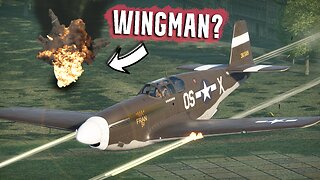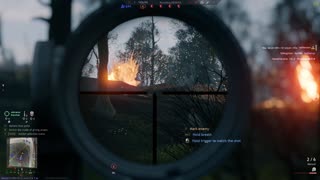Premium Only Content

Battle of Sevastopol Crimea World War II Russian sniper woman true and real story
Battle of Sevastopol Crimea World War II Russian sniper woman true and real story
The film is based on the life story of a real woman who was a Soviet sniper during World War II and did go to the US in 1942.
The siege of Sevastopol also known as the defence of Sevastopol (Russian: Оборона Севастополя, romanized: Oborona Sevastopolya) or the Battle of Sevastopol (German: Schlacht um Sewastopol; Romanian: Bătălia de la Sevastopol) was a military engagement that took place on the Eastern Front of the Second World War. The campaign was fought by the Axis powers of Germany and Romania against the Soviet Union for control of Sevastopol, a port in the Crimea on the Black Sea. On 22 June 1941 the Axis invaded the Soviet Union during Operation Barbarossa. Axis land forces reached the Crimea in the autumn of 1941 and overran most of the area. The only objective not in Axis hands was Sevastopol. Several attempts were made to secure the city in October and November 1941. A major attack was planned for late November, but heavy rains delayed it until 17 December 1941. Under the command of Erich von Manstein, Axis forces were unable to capture Sevastopol during this first operation. Soviet forces launched an amphibious landing on the Crimean peninsula at Kerch in December 1941 to relieve the siege and force the Axis to divert forces to defend their gains. The operation saved Sevastopol for the time being, but the bridgehead in the eastern Crimea was eliminated in May 1942.
After the failure of their first assault on Sevastopol, the Axis opted to conduct siege warfare until the middle of 1942, at which point they attacked the encircled Soviet forces by land, sea, and air. On 2 June 1942, the Axis began this operation, codenamed Störfang (Sturgeon Catch). The Soviet Red Army and Black Sea Fleet held out for weeks under intense Axis bombardment. The German Air Force (Luftwaffe) played a vital part in the siege, its 8th Air Corps bombing the besieged Soviet forces with impunity, flying 23,751 sorties and dropping 20,528 tons of bombs in June alone. The intensity of the German airstrikes was far beyond previous German bombing offensives against cities such as Warsaw, Rotterdam or London.[6] At the end of the siege, there were only 11 undamaged buildings left in Sevastopol. The Luftwaffe sank or deterred most Soviet attempts to evacuate their troops by sea. The German 11th Army suppressed and destroyed the defenders by firing 46,750 tons of artillery ammunition on them during Störfang.
-
 0:32
0:32
odindileggo
2 years agoTrue Story russian attacks woman
83 -
 26:32
26:32
VRevelations
2 years agoUkraine Launches Drone Attacks On Russian Naval Base In Sevastopol Crimea
20 -
 0:35
0:35
SaucyJustin
2 years agoI’m the best sniper in the world! (Fortnite Battle Royale)
37 -
 15:01
15:01
TJ3 History
2 years ago $0.01 earnedWorld War II Pilot Tells a Brutal True Story
131 -
 7:29
7:29
Vultron
2 years agoRussian Sniper, 1945 Berlin
1 -
 1:03:59
1:03:59
The Rubin Report
1 hour agoPress Stunned by Tulsi Gabbard’s Scathing Remarks During Her Shock Announcement
5.43K19 -
 LIVE
LIVE
The Shannon Joy Show
2 hours ago🔥🔥While Headlines Scream About Epstein, Obama, Hillary Scandals - Trump’s Digital Leviathan Is Unleashed With The BBB, AI.GOV & Three New Executive Orders🔥🔥
188 watching -
 1:00:02
1:00:02
VINCE
3 hours agoAre The Walls Closing In On Obama? (w/ Victor Davis Hanson) | Episode 92 - 07/24/25
154K119 -
 LIVE
LIVE
LFA TV
15 hours agoLFA TV ALL DAY STREAM - THURSDAY 7/24/25
4,882 watching -
 DVR
DVR
Bannons War Room
5 months agoWarRoom Live
29.6M7.32K